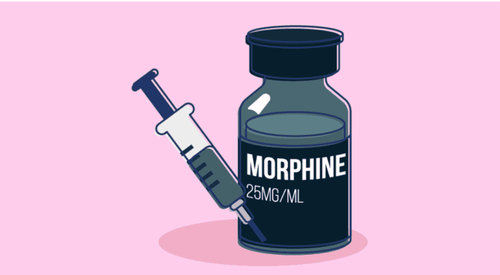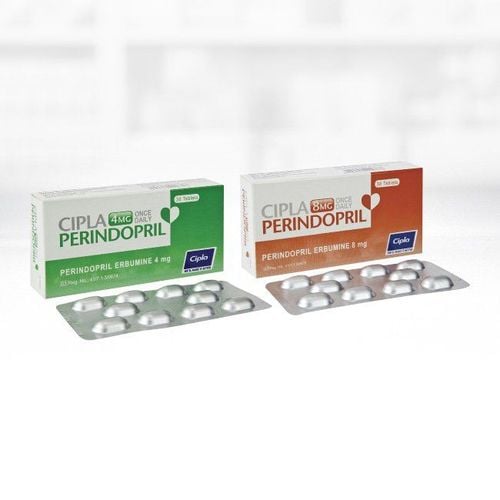This is an automatically translated article.
Vinzix 40mg drug has the active ingredient Furosemide 40mg and other excipients in a sufficient amount. The drug is indicated for the treatment of cases such as edema, hypertension, oliguria in chronic renal failure or impaired renal function and in the treatment of hypercalcemia.
1. What is Vinzix 40mg? The effect of the drug Vinzix 40mg
The formula for 1 Vinzix 40mg tablet is:
Pharmaceutical substance: Furosemide 40 mg; Other excipients with sufficient amount of tablets 1.1. Pharmacodynamics of the drug Vinzix 40mg Pharmaceutical substance Furosemide is a sulphonamide-derivative diuretic. The drug acts on the ascending limb of the loop of Henle, so it is classified as a loop diuretic. The main mechanism of action of Furosemide is to inhibit the Na+/K+/2Cl- co-transport system in the thick ascending limb of the loop of Henle, increasing the elimination of these electrolytes and increasing water excretion. Vinzix 40mg also reduces the reabsorption of Na+, Cl- and increases the elimination of K+ in the distal tubule and may act directly on the proximal tubule. Furosemide increases the excretion of ions such as Ca2+, Mg2+, hydrogen, ammonium, Bicarbonate and possibly phosphate through the kidneys. Excessive loss of potassium, hydrogen, and chlorine can cause metabolic alkalosis. Furosemide has the effect of dilating the renal vessels, reducing the resistance in the renal vessels and the blood flow through the kidneys increases after taking the drug. When high doses of Vinzix 40mg are used in patients with chronic renal failure, the glomerular filtration rate may increase temporarily. If excessive diuresis is caused by drugs that reduce plasma volume, decreased renal blood flow and decreased glomerular filtration rate may occur. 1.2. Pharmacokinetics of Vinzix 40mg Pharmacokinetics Furosemide is rapidly absorbed from the gastrointestinal tract, bioavailability is about 60-70%, but absorption is variable and erratic, affected by drug form and food. However, whether taking the drug at the time of fasting or fullness, the diuretic response is similar. In people with heart failure, absorption of furosemide is even more erratic. Bioavailability may be reduced to 10% in renal disease, slightly increased in liver disease. When taken orally, the effect of the drug appears quickly after about half an hour, reaches its maximum effect after 1 to 2 hours and lasts for 6 to 8 hours. Furosemide is eliminated mainly in the urine, mostly as unchanged drug. The mean half-life is from 30 minutes to 120 minutes in normal people, the half-life is prolonged in neonates and patients with liver and kidney failure. Furosemide crosses the placental barrier and enters breast milk. The clearance of furosemide is not increased by hemodialysis.
2. Indications of Vinzix 40mg
Vinzix 40mg is indicated for use in the following cases:
Indications for the treatment of edema in adults and children associated with heart failure, cirrhosis, kidney disease including nephrotic syndrome. Indicated for the treatment of hypertension in adults, used alone or in combination with other antihypertensive agents. Indications for the treatment of oliguria in patients with chronic renal failure or impaired renal function. Indications for the treatment of hypercalcemia.
3. Usage and dosage of Vinzix 40mg
Treatment of edema: The usual starting dose is 1 tablet of Vinzix 40mg/day. The doctor will adjust the treatment dose if deemed necessary according to the response. In mild cases of edema, the dose can be reduced to 20mg/day or 40mg every other day. In severe cases, your doctor may need to gradually increase the dose up to 600mg/day. Treatment of hypertension: Furosemide is not the main drug to treat hypertension and can be combined with other antihypertensive drugs to treat hypertension in people with kidney damage. Oral dose is from 1 to 2 Vinzix 40mg tablets equivalent to 40-80mg/day, used alone or in combination with other antihypertensive drugs. Treatment of hypercalcemia: Oral medicine equivalent to 120mg/day orally or divided into 2 or 3 small doses. For the elderly, the body is more sensitive to the effects of the drug than the usual therapeutic dose in adults. Treatment of oliguria - anuria in acute or chronic renal failure, when the glomerular filtration rate is less than 20ml/min, take 250mg of Furosemide diluted in 250ml of appropriate infusion, infused over one hour. Treatment of chronic renal failure, the initial treatment dose is 250mg can be used orally. In some cases, the treating doctor may add 250mg every 4 hours, up to a maximum of 1.5g/24 hours, in special cases up to 2g/24 hours. Adjust the dose according to the individual response to the specific medical condition. However, do not use in long-term treatment. Note when using Vinzix 40mg: While taking high-dose therapy, the treating doctor will order to check the water - electrolyte balance. This high-dose therapy is contraindicated in renal failure caused by nephrotoxic or hepatotoxic drugs, and in renal failure associated with hepatic coma.
4. Undesirable effects of Vinzix 40mg
Some unwanted effects may be encountered when using Vinzix 40mg as follows:
Water and electrolyte imbalance; Feeling of dry mouth, thirst; Weakness, lethargy, dizziness, restlessness; Fatigue, cramps or muscle fatigue; Low blood pressure, little urine; Tachycardia or arrhythmia; Feeling nauseous and vomiting.
5. Interactions of Vinzix 40mg
Drug interactions may occur when using Vinzix 40mg in combination with the following drugs:
Vasodilators and antihypertensives: Using together with Vinzix 40mg will increase the risk of hypotension. Furosemide should be discontinued or the therapeutic dose reduced prior to initiating treatment with these agents. Antipsychotics: Vinzix 40mg causes hypokalemia, increasing the risk of cardiotoxicity. Antiarrhythmic drugs including amiodarone, disopyramide, flecainide, sotalol increase the risk of cardiotoxicity. The effects of lidocaine, tocainide or melatonin may be antagonized by furosemide. Cardiac Glycosides: When used in combination increases the risk of cardiotoxicity. Lithium salts: Furosemide reduces lithium excretion, leading to increased plasma lithium concentrations (risk of toxicity). Concomitant use should be avoided unless plasma lithium levels are monitored. NSAIDs: Antipyretic, analgesic, and anti-inflammatory drugs may increase the risk of nephrotoxicity, especially in hypovolemic individuals. In people who are dehydrated or hypovolemic, NSAIDs can cause acute kidney failure. Indomethacin and ketorolac may inactivate furosemide. Salicylates: Furosemide may increase the effects of salicylates. Antibiotics: Antibiotics such as aminoglycosides, polymyxins and vancomycin increase the risk of ototoxicity. Aminoglycosides and cephaloridines increase the risk of nephrotoxicity. Furosemide may decrease vancomycin serum concentrations after cardiac surgery. Antidiabetic drugs: The hypoglycemic effect is antagonized by the action of the drug Furosemide, so it is necessary to increase the dose of insulin when used together. Antiepileptic drugs: Increased risk of hyponatremia when used with Carbamazepine. The diuretic effect of Furosemide may be reduced when used in combination with Phenytoin. Antihistamines: Hypokalemia, increased risk of cardiotoxicity. Antifungal drugs: Increased risk of hypokalemia when used in combination with Amphotericin B. Sedatives and hypnotics: Increased hypotensive effect. Other diuretics: Furosemide taken with the diuretic Metolazone may cause an increased diuretic effect. When using Furosemide with thiazides increases the risk of hypokalemia.
6. Some notes when using Vinzix 40mg drug
6.1. Contraindications when using Vinzix 40mg drug Vinzix 40mg is contraindicated in the following cases:
Hypersensitivity or local sensitivity to Furosemide and sulfonamide derivatives or to any of the ingredients of the drug. People with anuria and impaired renal function (creatinine clearance less than 30 ml/min per 1.73 m2 body) and renal failure caused by poisoning with agents that are toxic to the kidneys or liver. Electrolyte disturbances such as severe hypokalemia, severe hyponatremia, hypovolemia, dehydration and/or hypotension. Use in combination with potassium supplements or potassium-sparing diuretics. Pre-coma or coma associated with cirrhosis or encephalopathy. Addison's disease. Digitalis poisoning. Women are breastfeeding. 6.2. Precautions when using Vinzix 40mg Lower blood pressure and/or blood volume, acid-base imbalance disorder: These symptoms should be treated before using Vinzix 40mg. Hypotension with symptoms such as dizziness, fainting or loss of consciousness may occur in people being treated with furosemide, especially the elderly. Dose adjustment is required for patients with impaired liver function, hypoproteinaemia. Caution should be taken when using Vinzix 40mg drug on people with impaired liver and kidney function, hepatorenal syndrome, diabetes, the elderly, people with difficulty urinating, at risk of urinary obstruction such as pathological diseases. Prostate enlargement, gout, people at risk of low blood pressure. Pregnancy: Vinzix 40mg should not be used during pregnancy unless the doctor prescribes it after weighing the benefits outweigh the possible risks to the fetus. Lactation: Using furosemide during lactation may inhibit secretion or pass into breast milk. You should stop breastfeeding if medication is necessary. Above is important information about Vinzix 40mg drug. Understanding the use, use, and dosage will help the process of using the drug bring better results for the patient.
Please dial HOTLINE for more information or register for an appointment HERE. Download MyVinmec app to make appointments faster and to manage your bookings easily.













